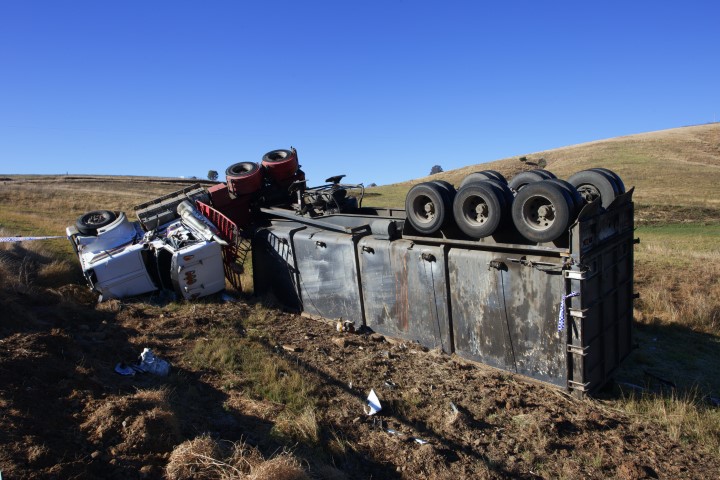 While road accidents happen for various reasons, big rigs are among the leading causes of pile ups and mass casualties. These behemoth trucks routinely transport goods and materials across our highways and turnpike systems. While most drivers follow the rules and don’t run into issues, unfortunately, the results can be catastrophic when these large vehicles crash. That’s why there is technology in preventing truck accidents.
While road accidents happen for various reasons, big rigs are among the leading causes of pile ups and mass casualties. These behemoth trucks routinely transport goods and materials across our highways and turnpike systems. While most drivers follow the rules and don’t run into issues, unfortunately, the results can be catastrophic when these large vehicles crash. That’s why there is technology in preventing truck accidents.
Truck accidents are widespread in California compared to other states. Such accidents are most common on the highways leading into major cities, such as San Francisco. According to police reports, California’s most common types of truck accidents include rear-ending, rollover, jackknife, wide turn, sideswipe, tire blowout, and underride.
Truck accident attorneys understand how devastating these crashes can be for victims and their families. One of the realities of these accidents is that they are often more complex than passenger car collisions due to their size and weight, making litigation exceedingly difficult without specialized representation. If you or a loved one was injured on the road, consult a San Francisco truck accident attorney to file for restitution.
Fortunately, advances are being made daily to make driving safer for everyone on the roads, including truck drivers. The following sections will examine several ways that technological innovations have minimized dangers to allow for a safer driving experience for big-rig operators and motorists.
Advanced Safety Features
In recent years, manufacturers have incorporated various advanced safety features into commercial trucks designed to prevent or reduce damage should an accident occur. For instance:
Collision Mitigation Systems (CMS)
These sensors act as a warning system by alerting drivers if they travel too closely behind another vehicle or approach static objects like obstacles in construction zones.
Lane Departure Warning (LDW)
This notification system alerts operators when they drift out of their lane without turning on their signal lights. These technologies serve as preventative measures rather than reactive ones or anti-collision innovations since putting them into use preemptively helps keep accidents from happening altogether.
In-Cabin Innovations
Like CMSs mentioned above, built into commercially produced semi-trucks that boast technological appeal throughout the entire vehicle’s inner workings, have also experienced growth since smaller personal automobile models first saw this modern update become popularized mainstream roughly 15 years ago.
Dash Cams
These mini cameras situated atop dashboard consoles capture footage continuously while a rig is in motion, giving them an array of benefits from front-and-center evidence capture should an accident have occurred to providing both fleet managers and law enforcement officers with feedback reports on vehicle safety practices.
Black Box Recorders
Like dash cams’ purpose, these devices serve almost exclusively as a black box for big rigs. They track important vehicle metrics such as GPS coordinates per transport cycle, driver speed throughout the period drivers are at the controls, and engine/tire malfunctions, allowing analysis leading to preventative maintenance.
Together these innovations eliminate guesswork when accidents happen, keeping those responsible accountable and ensuring safer futures.
Safety Training
While Technology in Preventing Truck Accidents can significantly reduce traffic accidents involving commercial trucks over time, it will only sometimes be the primary factor. Reliable training techniques reduce risks even further since people are human and make mistakes that only sometimes involve advanced gadgets or features failing while in use.
Driver Education Programs
These courses instruct truckers on key safe-driving practices, including how to make lane changes without causing danger to other vehicles traveling around them. It also included industry-specific instructions on oversized/underweight load transportation principles that help keep all roads shared by commercial vehicles safe for everyone involved.
Simulators
Highly effective tools used universally among driving school programs but with increasing frequency found being added in more full-fledged continuing education environments for all varieties of operators, including fleet staff learning exercises on critical thinking skills used in emergencies resolving problems under high pressure often inherent in spills-scenarios firefighting bloodborne pathogen remediation alike.










